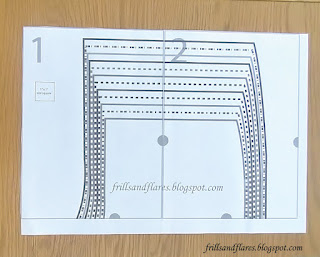Today I would like to share a free PDF sewing pattern for Kids' Basic Sleeveless Dress with Gathered Skirt for Sizes 1 Year to 12 Years.
This basic dress has a sleeveless bodice and a gathered skirt. You can use the same fabric for both the bodice and the skirt, or you can use contrast colored fabrics.
You can use lining fabric for the bodice. But you will have to trim the side seams a bit to avoid bulk, and also trim the button extension by 3/4 inch from the outer edge.
Click the link below to browse all the free PDF sewing patterns for women:
*This post contains affiliate links, which means I make a small commission at no extra cost to you.
Sewing Supplies Needed:
1. Fabric
2. Free printable PDF sewing pattern (pattern link is given below)
4. Sewing machine (Both Janome and Bernina work well for me. Brother is equally good too. I made this dress using my Janome sewing machine. I will soon post the sewing tutorial.)
5. Sewing machine thread (I prefer Gütermann and Coats, which are of great quality.)
6. Tape measure
7. Sewing pins
8. Serger (I am using Brother M343D, which works great)
Size Chart:
This is the size chart I used. Please take your kid's bust round measurement and compare it with the measurement in the size chart to find the right size for her.
Pattern download link:
Here is the pattern download link:
Kids' Basic Sleeveless Dress with Gathered Skirt Free PDF Sewing Pattern
If you want to sew sleeves to this dress click this link to download the free full sleeve PDF sewing pattern for kids' sizes 1 year to 12 years.
Pattern Assembly:
The diagram below shows how to assemble the pattern pages. There are 12 pages in the pattern PDF. And these pages are arranged as shown in the diagram.
Seam and Hem Allowances:
Seam and hem allowances are included in the pattern.
Front and back bodice:
Neckline 3/8 inch
Sides 3/4 inch
Armholes 3/8 inch
Bottom edge 3/8 inch
Skirt
Top edge 3/8 inch
Sides 3/4 inch
Hemline 3/4 inch
How to Sew?
1. With right sides of the front and back pieces together, join the shoulders.
2. Turn the button extensions over by 1/4 inch and then again by 1 inch, and sew over the folded edge.
3. Finish the neckline and armhole by attaching a bias tape.
4. Join the sides of the bodice.
5. Join the sides of the skirt.
6. Gather the top edge of the skirt and attach it to the bodice.
7. Sew buttons and buttonholes onto the extensions at the bodice back.
Done!
Happy sewing!
---Flora


































